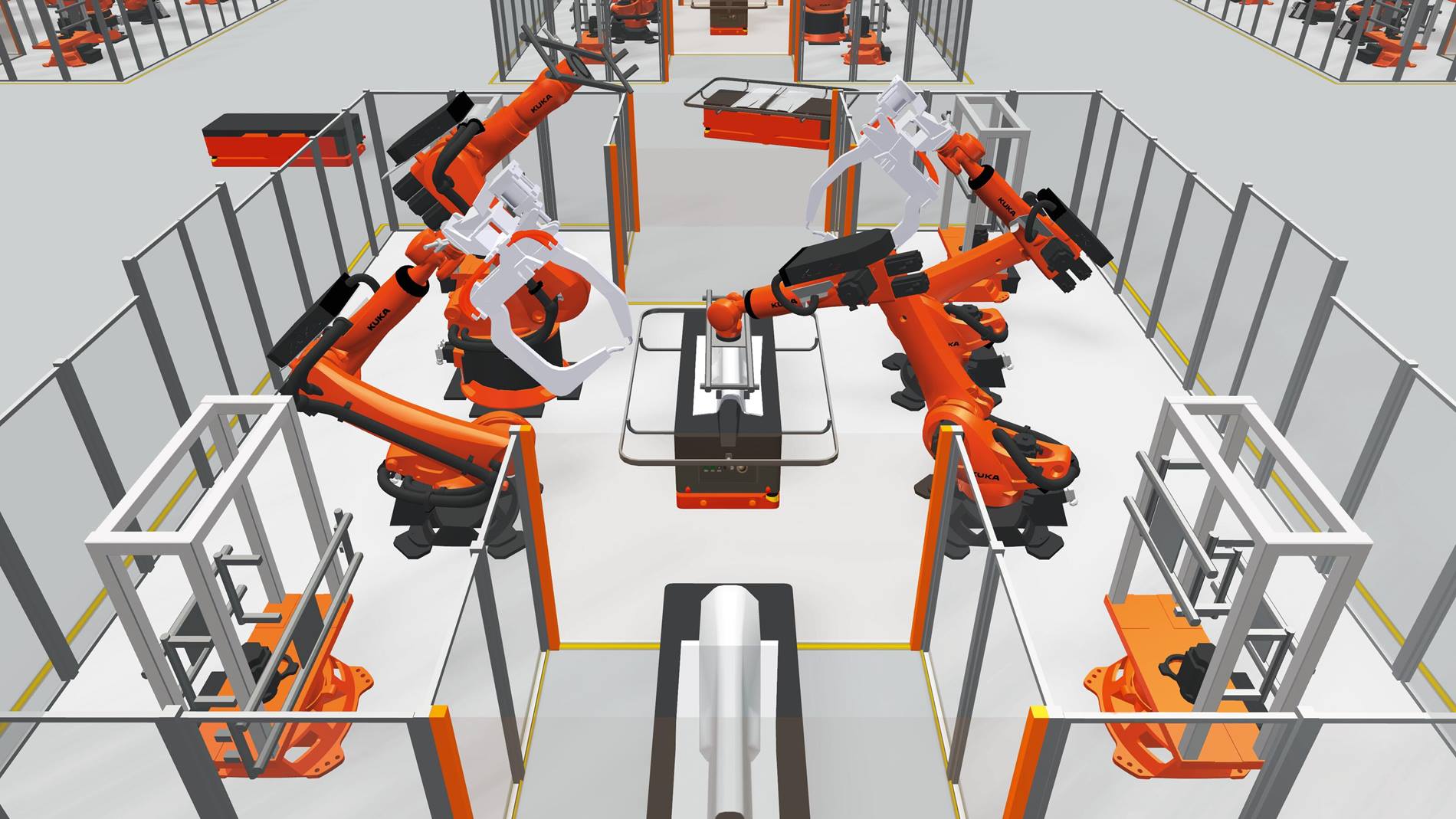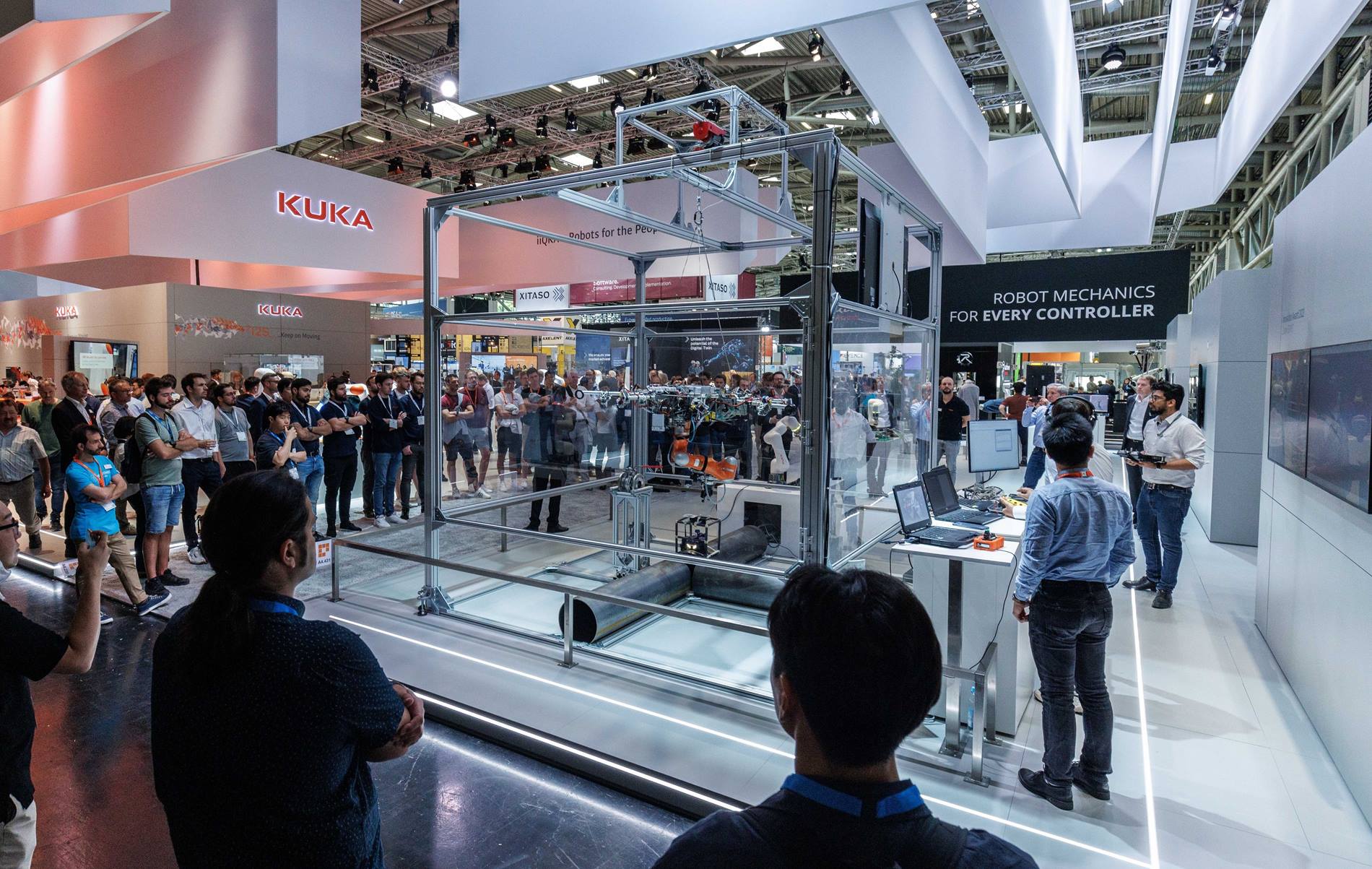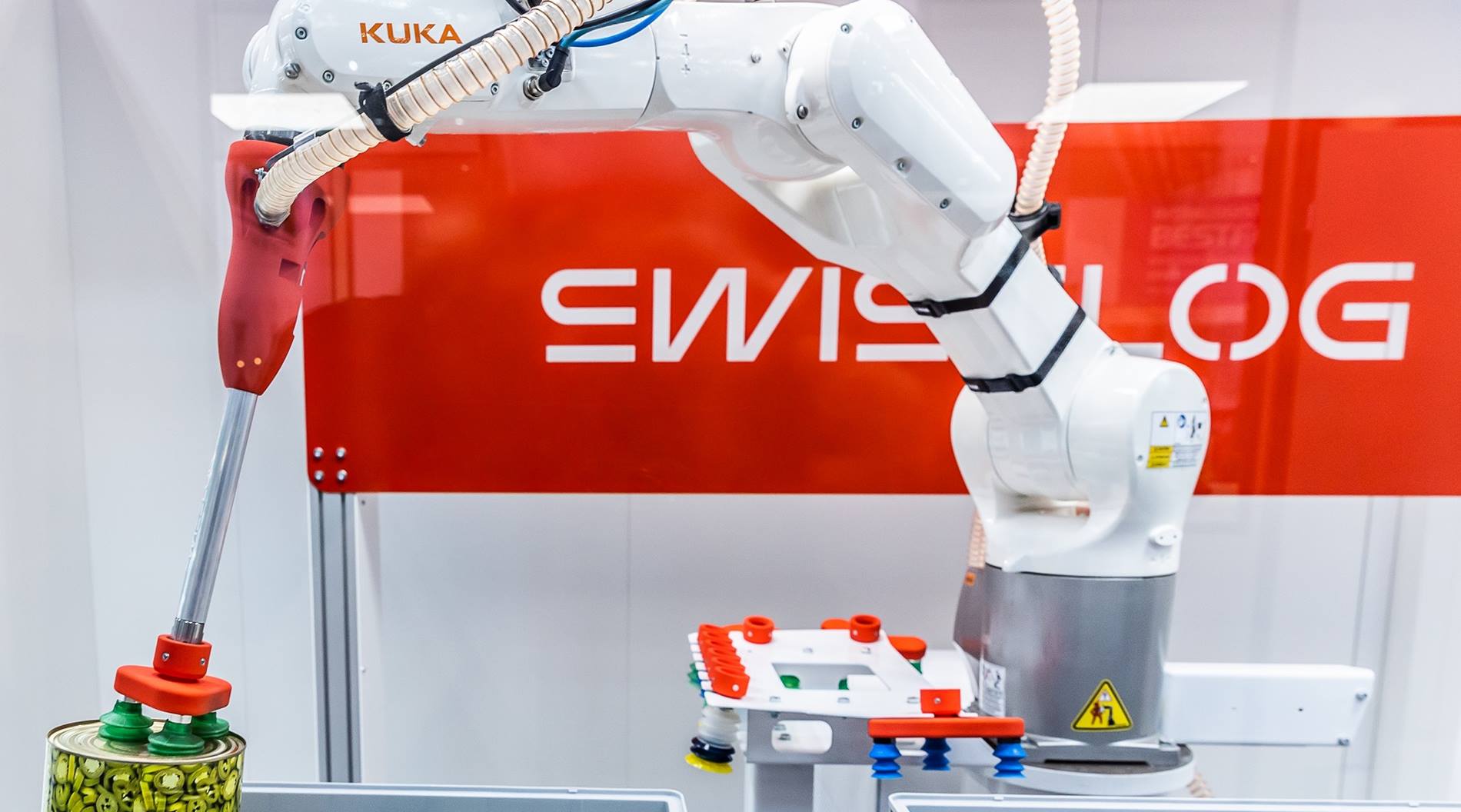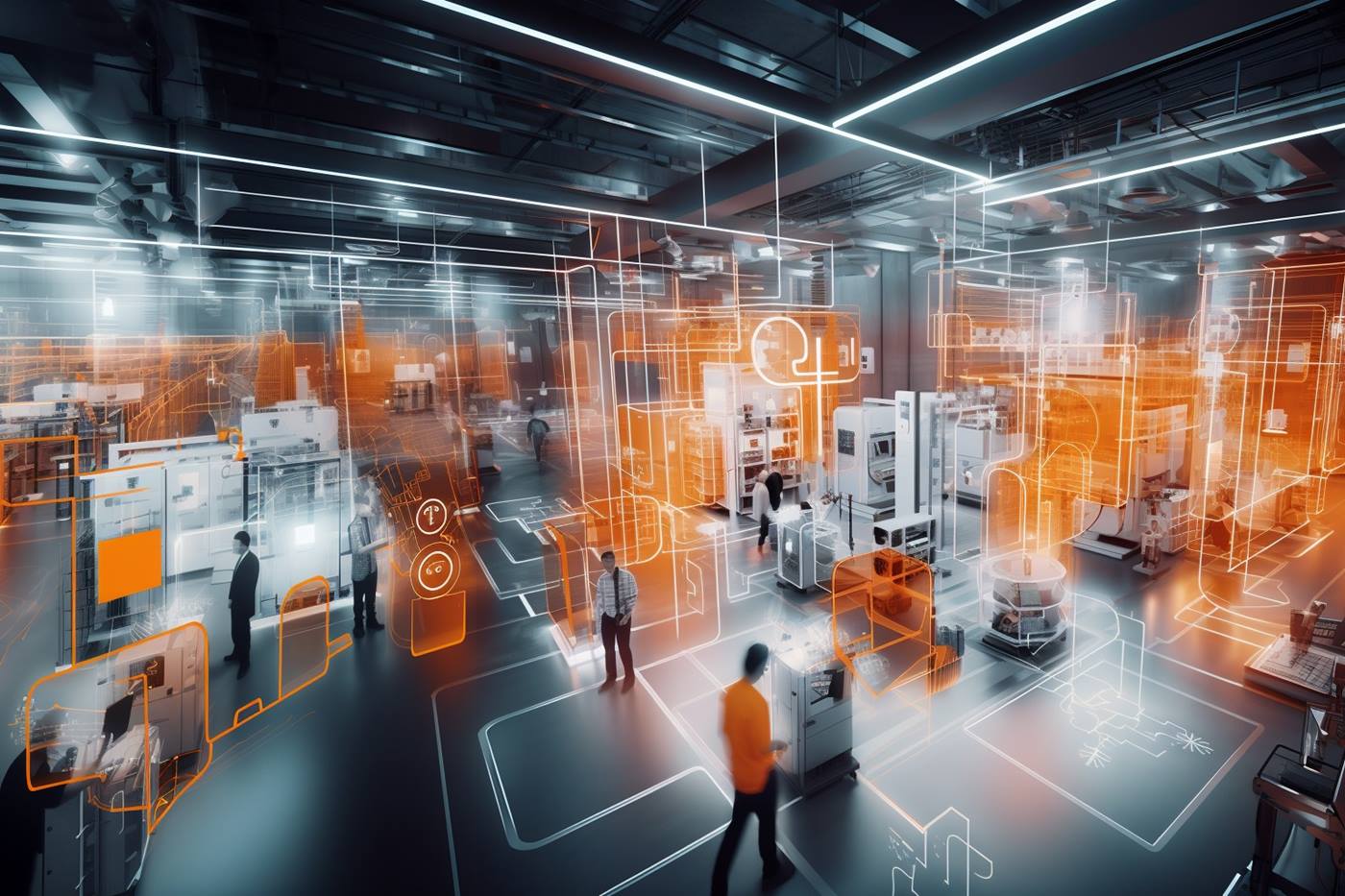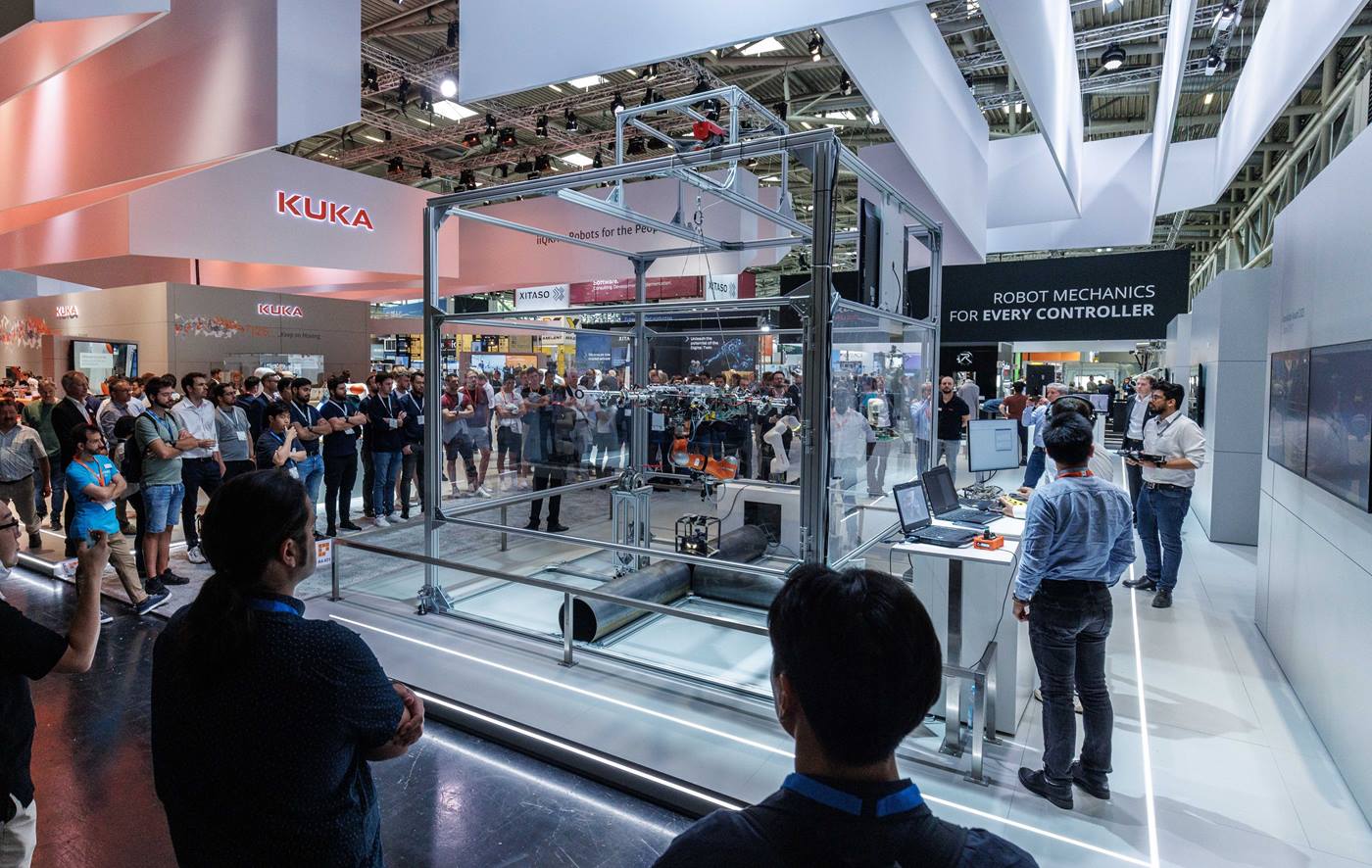KUKA utilises artificial intelligence in its own products and solutions. Above all this, there is always one fundamental goal: to make access to automation as easy as possible for our customers. In the future, artificial intelligence will make a major contribution to this.
We will show you two applications:
Test in the simulation what would still be too delicate on the robot controller
A team at KUKA is currently working on using AI to support the creation of programming code. Generative AI is being used for this purpose. In the long term, AI is even intended to supplement the classic input that is currently made via the KUKA smartPAD. It would then be possible for end users to give so-called prompts, i.e. text input such as questions or in everyday language, directly to the AI. The AI then creates the code to programme the robot for the task in question.
What is currently being created here is a KRL chatbot. However, it would still be too dangerous to test AI-generated programme code directly on the robot controller. The entire industry agrees on this. It therefore makes sense to use the simulation environment for precisely this purpose. Such developments can be ideally tested with a digital twin - even if the AI code still contains logic errors and the robot simply continues to move despite a stop command. A collision in the simulated environment is much easier to deal with.
One day, however, this will change and AI will be able to programme much more reliably than humans and even react confidently to incorrect inputs. These models will then be transferred to the real world and take on tasks as AI assistants.
Improve handle quality: AI in Swisslog's ItemPiQ
On average, Swisslog's customers have 8,000 - 10,000 different products in their product ranges - be it food groups or companies from the pharmaceutical industry, from fashion and clothing to electronics and fast-moving consumer goods through to food and beverages. It is obvious that the packaging for such product ranges varies greatly: Large and small cartons, bags or individual plastic bottles.
Every day, these different items have to be picked, i.e. put together for a customer or delivery order. This is done fully automatically with Swisslog's ItemPiQ. ItemPiQ is an AI and camera-supported item picking robot. It can change its gripper autonomously and thus adapt to the different types of packaging.
Swisslog has been working for some time on improving gripping quality with the help of AI models. At Swisslog, there are three ways of training and improving AI models:
- Using existing data that is publicly accessible within the community and available for general use.
- Typical customer data that has been artificially generated based on the Swisslog experience.
- Fine-tuning with real customer data.
What can AI optimise with ItemPiQ?
On the one hand, the aim is to have a more stable grip, i.e. to increase the picking quality.
Then ItemPiQ should also be taught a certain amount of intelligence. The system should know which items it is currently picking - to prevent it from picking the wrong items or mistaking a piece of cardboard in the box for a product. In AI-speak, this refers to the field of "context awareness".
AI support naturally lends itself to image-based robot systems. The only question that currently remains is: how do I allow such systems to continue learning? In summer, the customer probably has a lot of products in bags, in winter in boxes. So how do you ensure that the AI doesn't forget how the gripper on the robot arm has to grip boxes in winter? This topic of "model updates" is currently still on many people's minds.
Nevertheless, it will soon be time to put the AI models into practice. After all, a laboratory environment always differs from the real world.

